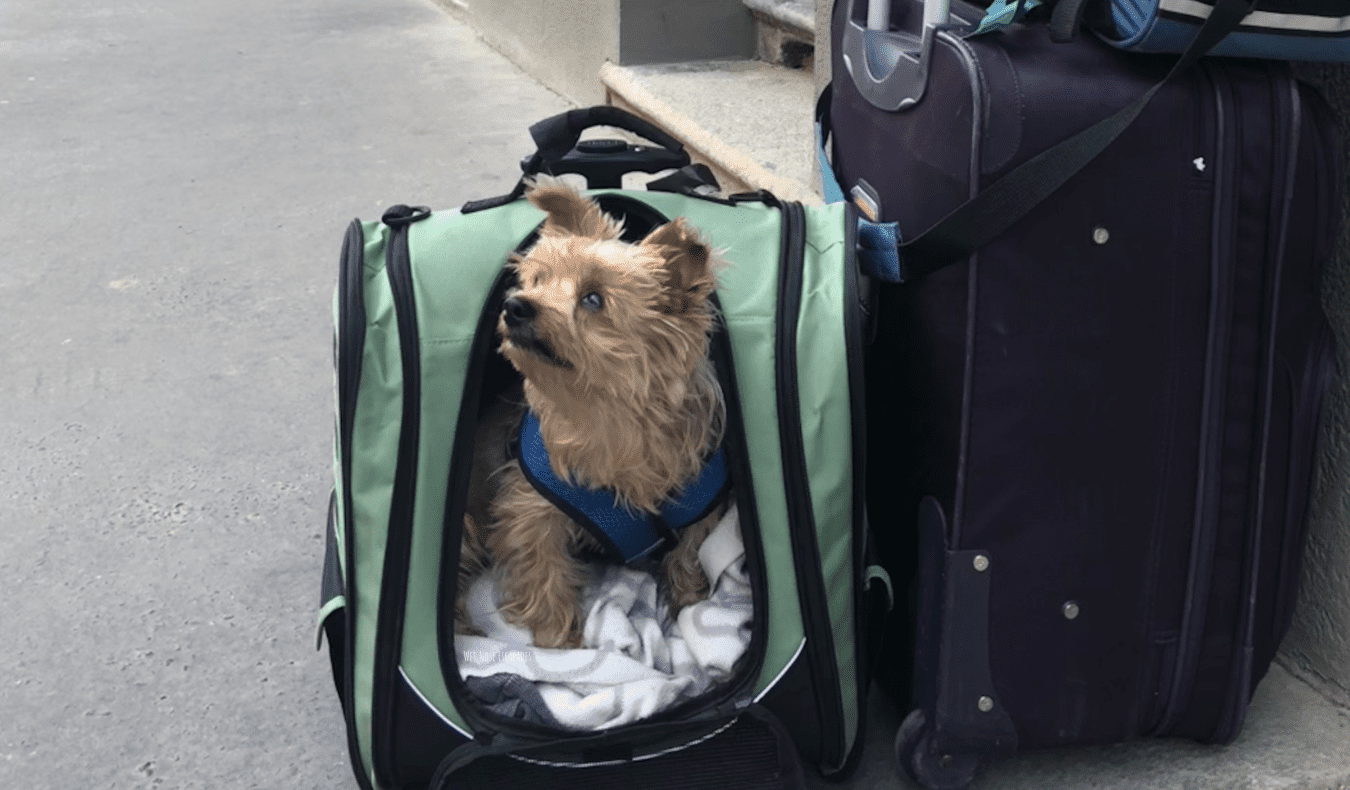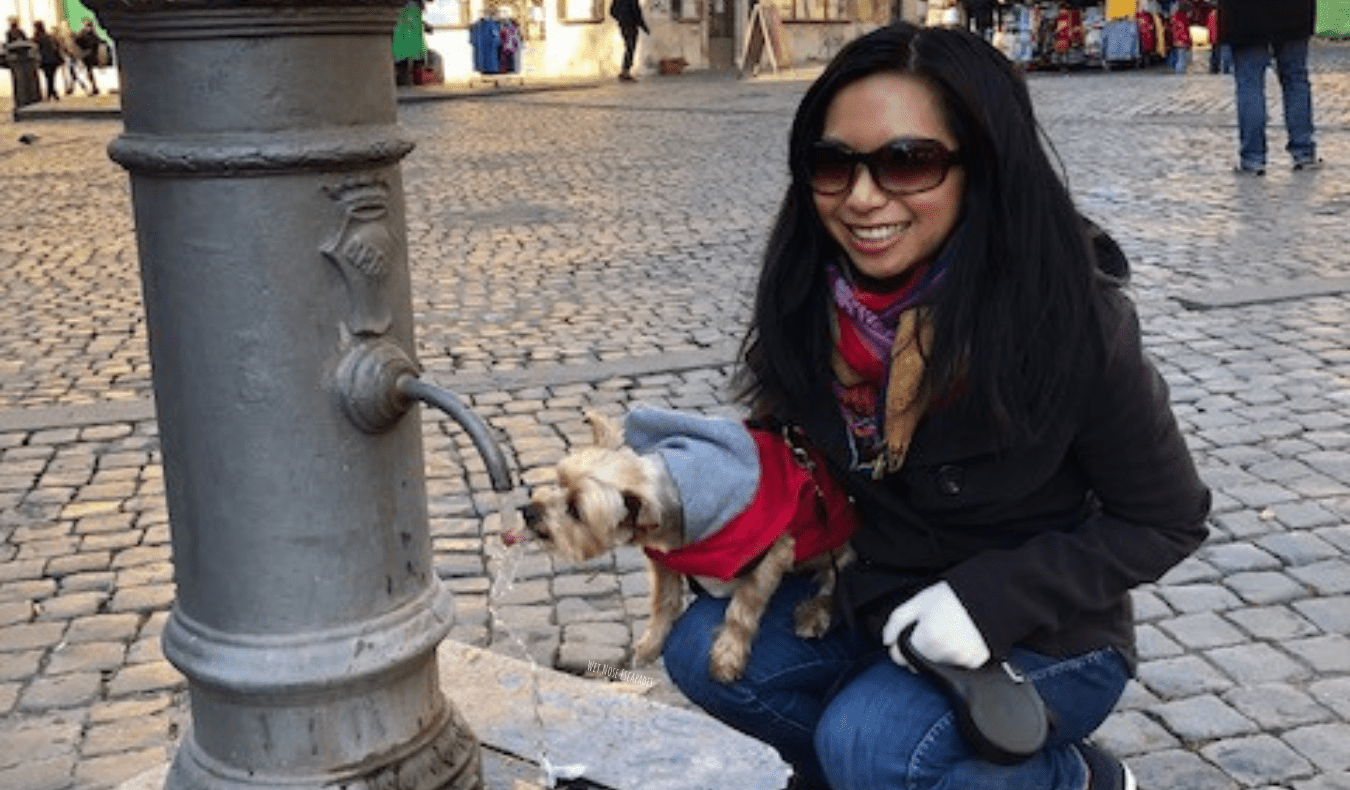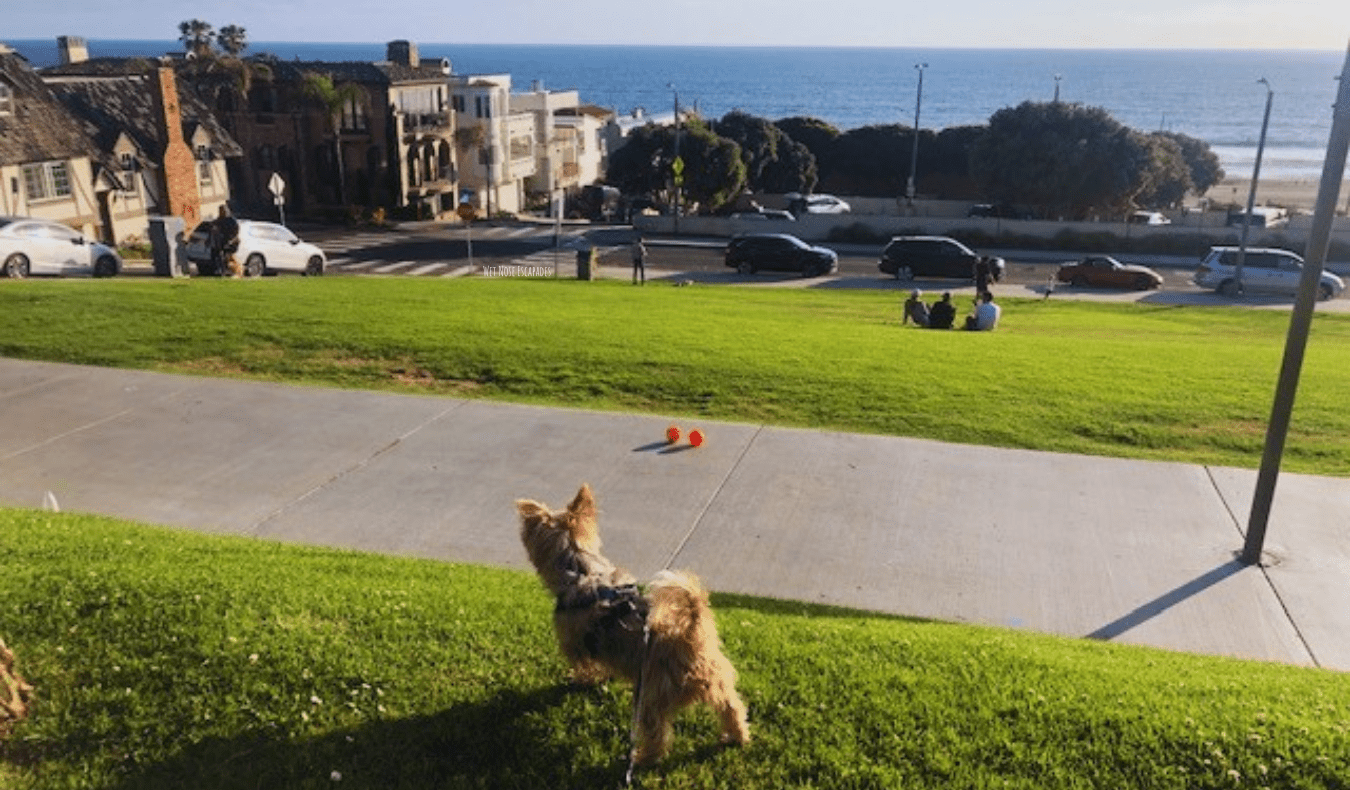
Posted : 10/27/22 | October 27, 2022
This is a guest post by Angelina (GG) Chow, who writes about international travel with dogs at Wet Nose Escapades. Over the past five years, he has taken his energetic Yorkshire terrier, Roger Wellington, on more than 50 flights to more than 20 countries. We will tell you what mistakes you should avoid when traveling with a small dog.
As the number of dog owners increases, many people are not only new to dog breeding, but also travel with dogs. According to the Society for the Prevention of Cruelty to Animals (ASPCA), more than 23 million American households (nearly one in five nationwide) adopted pets during the pandemic. And 37% of pet owners travel with their pets, up from 19% a decade ago. The US Department of Transportation says more than two million pets travel by air each year.
With demand for travel returning after the pandemic, this statistic is expected to grow each year. In addition to the usual road trips, many dogs are flying for the first time. While it may sound fun to take your dog to a cafe in Paris or walk through the gardens of Luxembourg, if it's not done right, it's more likely to travel with a dog. Even if your dog lands safely at his destination, that doesn't mean the flight wasn't stressful or traumatic for him.
If you don't have a service animal, frolicking in the backyard often turns into fun with a small dog. Items that are too large to fly in the carry-on (usually 16-20 pounds, depending on the airline) must be carried in the hold as checked baggage or cargo. Animal welfare organizations such as the Humane Society and PETA generally do not recommend keeping dogs because of extremely high or low temperatures, poor ventilation, rough handling, and lack of supervision. Therefore, flying in a cabin is always the safest option.
After more than five years of traveling the world on 7 lbs. Yorkie Roger Wellington, I learned that preparation is key to any cabin flight. Whether you're planning a weekend or vacation abroad, avoid these nine rookie mistakes when traveling with a small dog.
1. There is not enough time to train vectors

Training the carrier is the most important step in flying with a small dog. The goal is to help your pet feel comfortable and safe in the carrier before the flight. This step requires patience, time and many subtleties and should not be overlooked. You should spend at least two to three months daily preparing the shipment before your pet's first long-haul international flight and at least one month before your pet's domestic flight. Otherwise, the journey can be stressful for the animal.
Daily repetition is critical to success. During the three months leading up to Roger W's first international flight to Paris, I spent at least 20 minutes every day making the airport the most exciting place in the world. To test him, I put his favorite toys and treats in the box.
I recommend starting slowly, which means letting your dog explore the carrier for a few minutes a day and then gradually closing it after she's willingly entered the third or fourth time. Maximize your training time each day with the goal of creating a safe space in the aircraft carrier. Depending on the length of the flight, we recommend that you make your pet comfortable at least 1-3 hours before the departure date. The more comfortable your dog is in the carrier, the better it will adjust to the flight.
Get my tips on how to choose the best carrier for your small dog.
2. Failure to check return flight requirements
Most people who plan to travel abroad with their dogs focus on a one-way search, such as how to take your dog to Paris or Rome. They do a little research before their return flight until it's time to go home.
If you are not moving to a permanent residence, you must ensure that you meet the requirements for bringing your dog back to the United States, which may vary depending on where you are traveling with your dog. Your state of destination may have additional requirements.
For example, dogs entering New York State from outside the United States must have a Certificate of Animal Health Inspection (CVI) issued by a veterinarian no later than 30 days before entry. The certificate must have a rabies vaccination record within one or three years.
It is important to understand that returning to the United States ultimately depends on where your dog has been. For example, there is a temporary ban until January 2023 for dogs from countries with "high risk" rabies (eg Brazil, Cuba, China, Russia, etc.). If you wish to return to the U.S. from such a category, your pet must have a valid and valid CDC dog import permit or a U.S.-issued rabies certificate and ISO-compliant microchip certification. You must also be at least six months old and in good health upon arrival (from 18 selected airports at a CDC quarantine station).
To re-enter the US from a country with a high risk of rabies (such as France, Belgium, Italy, England, etc.), your dog can enter at any port with a six-month travel document. and a statement of health status. . You must also have a pet that is at least six months old and microchipped and has a CDC dog import permit or valid rabies vaccination certificate issued in the United States.
If you are traveling to Europe with your dog, be aware that some countries are considered "high risk" for rabies by the EU (eg Montenegro). This means your pet will need proof of ownership before they can be returned to EU 'rabies control'.
You can learn more about USDA APHIS to find out exactly what requirements you must meet.
In addition to the rabies laws, there are special requirements if you are returning to the United States from animals known to have helminths or not declared free of foot-and-mouth disease.
3. Complete your dog's first international flight
Long-haul flights are difficult for everyone, and your furry traveler is no exception. No matter how confident you are in your little dog's ability to travel the world, her first flight should never be a long-haul international flight. It's best to take at least one domestic flight before traveling abroad so your dog can get in easily. I flew with Roger W on four flights from San Francisco to Los Angeles (and back) and from California to New York before the 10 hour flight from Los Angeles to Paris.
Unlike humans, dogs do not know where they are going or how long they will be on the plane. Therefore, the more flights you can give your little dog, the better he will behave on a big (long) day of travel.
And your pet should know not only the flight process, but also the general situation in the airport. For example, help familiarize your little dog with airplane noise, airport noise, crowds, TSA screening, and the boarding process. In general, familiarity breeds comfort.
4. Take a flight with more than one stop
While it's tempting to save money by choosing a route with multiple stops, you should fly direct with your small dog if possible. Again, you never know where you are going or how long it will take to get there. Even a seemingly quick stop can add more stress to your dog's little body during a long day of travel. If multiple layers cannot be avoided, you should give your pet some much-needed rest by spending a few days to a week at the destination before taking another flight.
I am often asked what is better: a long flight or a short connecting flight. My main tip is if the flight is longer than 11 or 12 hours, I suggest splitting the day of the trip. The shorter the path, the easier it is for the dog. A few days of rest will help you recover and recharge your energy for the next day of travel. Plus, you can both explore different places before arriving at your final destination!
5. Do not exhaust your dog's energy

It is necessary to train your pet to exhaust his energy before each flight. As the old saying goes, a tired dog is a happy dog! Practice walking before every flight to make your journey more relaxing and easy. The key here is not to force your dog into strenuous exercise, but to simply give her 15-20 minutes of extra exercise to help her sleep during the flight. The longer you can sleep on the plane, the smoother the trip will be.
However, before extending the time, consider your dog's general health and the weather - obviously, he should not be exposed to extreme heat or cold for 15 minutes.
On long-haul flights, I always make sure Roger W has his things before heading to the airport. The walk is usually 45 minutes so I'll add it to 60 minutes to make it a little more tiring. Upon arrival at the airport, I will escort you to the outdoor gardens and, if necessary, to the pet lounge. You can find pet parking spaces at US airports here.
After I put it on the shelf, I take it to the bathroom for the last time. Although many airports now have pet-friendly areas in the terminals, Roger W much prefers the road to the artificial grass found in most pet areas. If your dog has no problem defecating on artificial grass (it usually has a different set of "pee sheets"), you probably don't need to take it outside again.
6. Don't be strategic with food and water intake
In the world of air travel, people, especially when it comes to accidents, look down on "bad behavior" by dogs. No one wants to sit next to a dog (even a small one) that wets the floor (same as barking). So prevent accidents by planning meal schedules and portions of food and water, as well as bathroom breaks, before and during the flight. Never run a puppy on a full or empty stomach; The ideal eating time should be about two hours before leaving for the airport to allow time for digestion and relaxation.
Depending on the cabin temperature, I provide Roger W with fresh water every 3-4 hours on long-haul flights (seven hours or more) and every two hours on short-haul flights (less than seven hours) in addition to his needs. They prefer to give light meals or small portions during the flight to prevent injury and ensure he has enough food. If the flight is less than four hours, he will only give incentives for good behavior and refrain from eating until boarding. The longer the flight, the more economical you should be with your food and water consumption.
7. Do not be prepared for accidents
As mentioned earlier, "bad" dogs are frustrated, and the last thing you want to do is rush to find a grooming tool for your pet. No matter how trained your little dog is, accidents can still happen in a new environment, especially in a stressful situation.
Even after months of carrier training, accidents can happen as messy dogs try to "catch" as much as possible to avoid soiling their beds. Whether you're walking your dog through the terminal or flying at 35,000 feet, you need to have food bags, brooms, doggy brushes, and hand sanitizer handy so you can quickly clean up the mess. An emotionless dog. Pack these essentials in your personal belongings or carry-on where they are easily accessible.
Remember to show compassion when you find your dog acting out because she has been held for a long time or feels stressed in an unfamiliar situation. Don't make fun of it or yell at it, fix it quickly and move on (plus, dogs learn best with positive reinforcement).
Also: Be reasonable! After a 10 hour flight, do you expect your dog to "hold" her until you leave the airport or get to the pet terminal? A four-hour flight may not seem that long, but it can easily add up to seven hours when you do pre-flight check-in, TSA screening, boarding, and disembarkation. Roger W has never been in an airplane crash in over five years of travel, but I'm ready for quick and easy cleanup in the event of an accident.
8. Show your dog

While you'll find many loving dog walkers, you'll find others who are indifferent, fearful, or loathe their four-legged mini-walkers. Although it may be difficult to accept, you should never assume that everyone loves dogs or gets along with them. Respect people who fear or dislike you, are uncomfortable with you, or suffer from allergies.
Always be discreet unless you scan the room. Don't tease your little dog; You don't want an upset passenger complaining about their pet's behavior or presence. The less attention, the better.
Again, passengers or airline staff will not tolerate unruly dogs. Alas, even loud and boisterous children are more fortunate than calm, well-behaved dogs. Many passengers don't realize I have a small dog until it's time to get off the plane, which clearly shows how well-behaved Roger W is in public.
Instead of getting into pointless verbal spats with dog-hating passengers, you'll win everything from check-in to flight delays to baggage claim by ignoring them and making sure your pet is well-behaved.
Keep your pet on a leash or in a kennel and away from other people when going to the airport. We also met a young family of different cultures at Los Angeles International Airport, the children were screaming and running as we passed.
9. Don't watch your dog during the flight
You may feel relieved when your pet gets on the plane, the real journey is just beginning. From stress to ventilation problems to accidents, things can go wrong in the air. For a perfectly healthy puppy or older dog (like Roger W), you need to monitor him and keep him awake for as long as possible.
Even if your pet is curled up on all four paws and snoring on its back, it should not curl up completely in an emergency. Keep your headphones on low and keep an eye on your dog during the flight.
Shortly after taking off from Madrid for Geneva, Roger W. Air began to gasp and struggle for breath, with a remarkable lack of air. I immediately unzipped the roof rack to get more air, but I got in trouble with the flight attendants for breaking the rules. But, since no flight was worth my dog's life, I was determined to win. I tearfully questioned the two flight attendants for 15 minutes before finally leaving us alone.
Traveling with Roger W not only strengthened the bond between us, but also allowed me to make new connections and lasting friendships around the world. It brings a more "local" experience and takes me to places I wouldn't go without my dog.
Today, with more airlines, hotels and establishments allowing dogs, traveling with a small dog has never been easier. While you put your health, comfort and safety first, you can experience an incredible passion for travel together.
After leaving the usual office in 2016, Angelina (Gigi) Chou led a nomadic lifestyle with her Yorkshire terrier, Roger Wellington. She is the creator of the international blog about traveling with dogs Wet Nose Escapades, which is led by Roger V. She is also the author of the book «Как путешествовать с собакой: Expert guide by Roger Wellington on international travel with dogs». Follow their adventures on YouTube, Instagram, Facebook and Twitter.
Забронцания поеджку: логистические советы и рекондименти
book your flight
Find a cheap flight with Skyscanner. This is my favorite search system, because it searches for websites and airlines around the world, so you always know that nothing is left unused.
Book accommodation
You can book a hostel with Hostelworld. If you want to stay not in a hostel, use Booking.com, as it constantly offers the lowest prices on guest houses and hotels.
Don't forget tourist insurance
Travel insurance protects you from illnesses, injuries, thefts and cancellations. This is full protection in case something goes wrong. I never travel without it, because I had to use it many times in the past. My favorite companies that offer the best service and value are:
- SafetyWing (best for everyone)
- Travel insurance (for people over 70 years old)
- Medzhet (for additional evacuation)
Ready to book a train?
Visit my resource page to find out which companies are the best to use when traveling. I list all the things I use when I travel. They are the best in their class, and you won't be mistaken using them for a run.
The post «9 mistakes that should be avoided when traveling with a small dog» first appeared on the tourist site Nomadic Matt.

